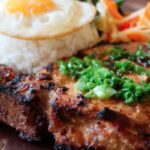Introduction: Exploring Vietnamese cuisine and culture
Vietnamese cuisine is known for its fresh ingredients, unique flavors, and healthy options. It is a blend of Chinese, French, and Southeast Asian influences, making it one of the most diverse and distinctive cuisines in the world. Vietnamese culture is deeply embedded in their food, and dining etiquette is an essential part of the culinary experience.
Vietnamese food is meant to be enjoyed and shared with others, and it is often a social activity. Dining in Vietnam is a time-honored tradition that brings people together and offers a glimpse into the country’s rich culture and history. Understanding Vietnamese dining etiquette is crucial for anyone who wants to fully immerse themselves in this unique culinary experience.
Table manners: Basic rules to follow when eating Vietnamese food
Vietnamese table manners are relatively simple and straightforward. It is essential to wash your hands before eating, as many Vietnamese meals are eaten with the hands. When sitting down to eat, wait for the host to invite you to start eating, and always use utensils to eat, unless instructed otherwise.
It is polite to eat slowly and savor the flavors of each dish. Avoid slurping or making loud noises while eating, as it is considered impolite. Show respect for the food by finishing everything on your plate, as wasting food is considered disrespectful in Vietnamese culture.
Chopsticks: How to use them properly and avoid common mistakes
Chopsticks are the primary utensil used to eat Vietnamese food, and it is essential to use them correctly. Hold the chopsticks near the top, using your thumb and index finger, and use the other fingers to support them. Do not use chopsticks to point or gesture, as it is considered rude.
Avoid playing with chopsticks or leaving them sticking out of your bowl, as this is seen as a sign of disrespect. It is also considered impolite to pass food to someone using chopsticks that you have already bitten, or to cross your chopsticks while placing them on the table.
Ordering and sharing: What to keep in mind when dining with others
When dining with others, it is customary to order several dishes and share them family-style. It is polite to offer the best pieces of food to others at the table, and to use serving utensils to transfer food from the communal dishes to your plate.
It is also considered impolite to order more food than you can eat, or to take food from someone else’s plate without permission. When ordering, it is best to ask the host for recommendations and defer to their choices.
Drinking customs: What to know about drinking alcohol and tea in Vietnam
In Vietnam, drinking is a social activity, and sharing drinks with others is a sign of respect and friendship. When drinking alcohol, it is customary to toast before taking a sip, and to clink glasses with everyone at the table.
When drinking tea, it is polite to pour tea for others before pouring for yourself. It is also customary to hold the cup with both hands as a sign of respect. Avoid filling your cup to the brim, as it is customary to leave a little space to show that you are ready for more.
Conclusion: Embracing Vietnamese dining etiquette as a sign of respect
Vietnamese dining etiquette is an integral part of the country’s culture and history. By embracing these customs, you show respect for the food, the people, and the traditions of Vietnam. Whether you are a local or a visitor, understanding these basic rules can enhance your culinary experience and create lasting memories. So, next time you sit down to enjoy a bowl of pho or a plate of spring rolls, remember to follow these simple rules and savor every bite.



